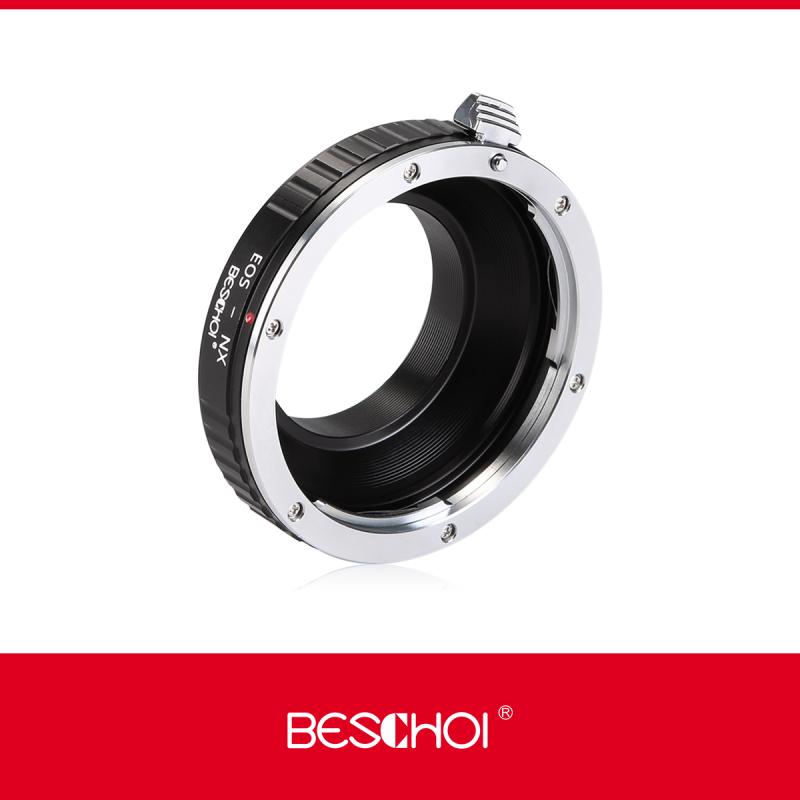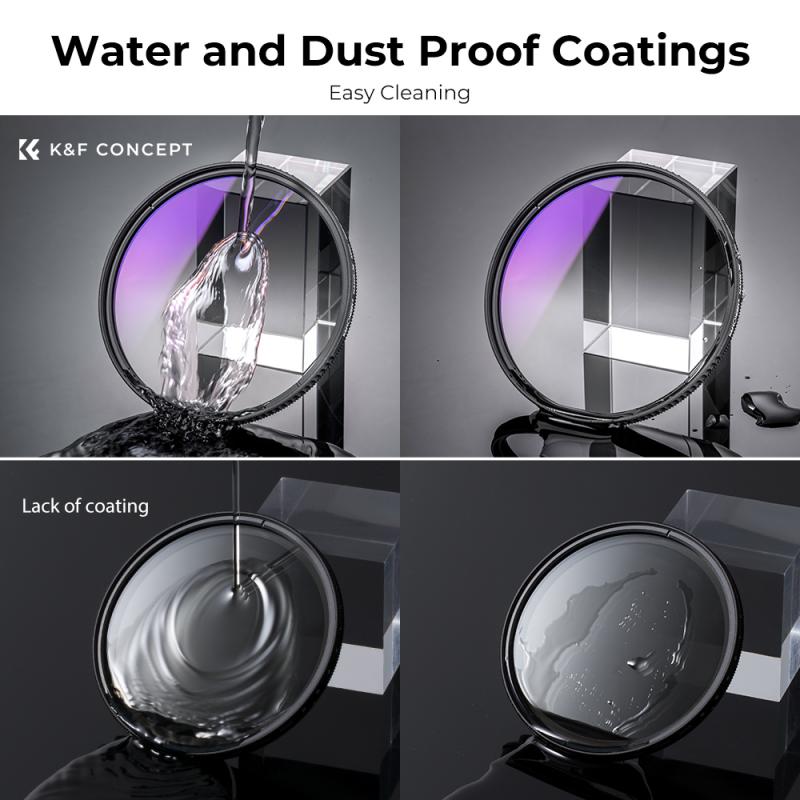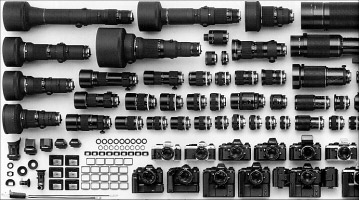Do All Nikon Lenses Fit All Nikon Cameras? Not all Nikon lenses are compatible with all Nikon cameras due to differing mount systems. Nikon’s F-mount lenses fit DSLRs, while Z-mount lenses are for mirrorless models.
Choosing the right lens for your Nikon camera is crucial to achieving the best imaging results and functionality. Nikon has two primary lens mounts: the F-mount for their DSLR cameras and the Z-mount for their newer mirrorless range. Understanding these mounts ensures compatibility and optimal performance.
Photographers must consider the camera’s sensor size, as DX lenses are designed for crop-sensor cameras, and FX lenses are meant for full-frame cameras. While adapters can bridge some compatibility gaps, native fitment provides the most seamless user experience. Selecting the appropriate Nikon lens for your camera not only enhances image quality but also leverages your camera’s full potential.
Compatibility Between Nikon Lenses And Cameras
Nikon cameras and lenses share a legacy of compatibility. This connection has evolved over time. It ensures photographers can mix old and new gear. Yet, not all lenses will fit every Nikon camera. Understanding the different mounts will guide you. It helps avoid mismatching lenses and camera bodies. Let’s dive into the history and the future of Nikon’s lens mounts.
F-mount Heritage
The Nikon F-mount has been a staple since 1959. It’s known for its remarkable compatibility. Lenses made decades ago still fit modern DSLR cameras. But, there are various versions of F-mount lenses:
- Non-AI: Manual focus, need modification to fit newer bodies.
- AI: Introduced apertures that cameras could sense.
- AI-S: Brought improved aperture mechanisms.
- AF: Added autofocus with a screw-drive mechanism.
- AF-S: Introduced internal focus motors.
DSLR users must check camera compatibility with older lenses. Entry-level models might not autofocus with AF lenses. High-end models handle almost all F-mount glass. This ensures a vast range of options for users.
Z-mount Introduction
In 2018, Nikon unveiled the Z-mount system for their mirrorless cameras. It represents a new era. Z-mount has a larger diameter and shorter flange distance. Advantages include:
- Better light capture
- Sharper edge-to-edge images
- More compact lens designs
F-mount lenses don’t fit Z-mount cameras directly. Nikon provides an FTZ adapter. It bridges the gap between legacy F-mount lenses and the Z system. Even with the adapter, some features may be limited. Always ensure your lens is compatible with the adapter.
Ultimately, Nikon strives to offer cross-compatibility. They want photographers to enjoy a wide array of lenses. Whether you have classic lenses or are eyeing the new Z series, Nikon has options. Knowing the distinct features of the F-mount and Z-mount will help you choose right.

Credit: www.kentfaith.com
Factors Affecting Lens Compatibility
Understanding Factors Affecting Lens Compatibility is key for Nikon camera users. When picking a lens, it’s not just about the model. Two crucial points have a big effect. To make the right choice, learn about mount types and sensor sizes.
Mount Type Variations
Nikon’s lens mounts change over time. Some lenses fit on specific cameras. Old lenses might not fit new cameras. Let’s explore the different types.
- F-mount: Used for a long time, fits most Nikon SLRs and DSLRs.
- Z-mount: Newer, works with Nikon’s mirrorless range.
- 1-mount: Only for Nikon 1 mirrorless series, not for DSLR cameras.
Sensor Size Considerations
Next, think about sensor size. It affects how lenses work with cameras. Nikon has two main sensor sizes:
| Sensor Type | Size | Description |
|---|---|---|
| DX | Smaller | Cropped frame, common in entry and mid-level cameras. |
| FX | Larger | Full frame, found in professional models. |
DX lenses fit DX and FX cameras. But remember, on FX cameras, they act different. FX lenses fit all, but are best for FX models. Now you know what to check before buying.
Interchangeable Lens Systems
The magic of photography lies in the lens, the eye of your camera. Nikon, a leader in camera technology, offers a broad range of lenses. Each lens opens up new possibilities. However, a common question arises: do all Nikon lenses fit all Nikon cameras? Let’s delve into Nikon’s interchangeable lens systems and explore compatibility across their diverse lineup.
Digital Slr Lenses
For years, Nikon’s DSLR cameras have captured stunning visuals. The key is the extensive collection of lenses available. DSLR lenses fall under two major categories: DX and FX. DX lenses are for crop sensor cameras, while FX lenses work with full-frame models. FX lenses are also compatible with DX models, but they will have a crop factor applied.
| Lens Type | Compatible Cameras | Crop Factor |
|---|---|---|
| DX | DX format DSLRs | N/A |
| FX | DX and FX format DSLRs | 1.5x for DX |
A special mention goes to AF-S and AF-P lenses. These have built-in autofocus motors. Older DSLRs without motors rely on these lenses for autofocus.
Mirrorless System Lenses
Nikon’s mirrorless cameras require a different kind of lens, known as the Z-mount series. These lenses are specifically designed for the new mirrorless system. They do not fit directly on DSLRs. However, Nikon provides an adapter. This bridge, the FTZ adapter, allows older F-mount lenses to work with Z-mount cameras.
- Perfect for Z-mount mirrorless cameras
- Can use F-mount lenses with FTZ adapter
Remember, while adapters enable compatibility, some features may be limited. For instance, autofocus speeds can differ. Always check your camera’s specification for the best lens match.

Credit: www.kentfaith.com
Adapting Older Lenses To Modern Nikon Cameras
Nikon’s rich history offers an extensive array of lenses. Not all Nikon lenses fit modern cameras, though. Photographers often aim to connect their cherished older lenses with the latest Nikon camera bodies. This process requires careful consideration and can breathe new life into vintage glass.
Usage Of Lens Adapters
Adapters provide a bridge between old and new. Each lens system has unique mounts and connections. To use an older Nikon lens with a modern Nikon camera, an adapter is often necessary. These adapters vary in design and function. They allow photographers to expand their lens options without sacrificing compatibility with their camera bodies.
- Ensures proper lens mount alignment
- Maintains infinity focus capability
- Adjusts flange distance for optimal performance
Functionality Limitations
While adapters solve physical fit issues, they introduce functionality constraints. Not all lens features will work perfectly. Autofocus and aperture control may be limited or unavailable. Below are common limitations you may encounter:
| Feature | Limitation |
|---|---|
| Autofocus | May be slow or non-existent |
| Aperture Control | Manual adjustment might be needed |
| Lens Metering | Incorrect or absent readings |
| Image Stabilization | Not supported with all lenses |
| Electronic Communication | Limited lens-to-camera data transfer |
Lens adapters offer creative possibilities but come with trade-offs. Understanding these limitations is key to successful adaptation.
Ensuring Optimal Performance
Ensuring optimal performance with Nikon cameras involves more than just snapping a lens onto a body and shooting away. The correct match between lens and camera model is crucial for the best quality pictures. Knowledge of compatibility can save time, money, and frustration, leading to a more fulfilling photography experience.
Matching Lenses To Camera Models
Nikon has a rich history of camera and lens innovation. Each lens comes with features that work with specific camera models. Today’s Nikon lenses are backward compatible, but only to an extent. Older lenses may not offer autofocus with newer camera bodies. Modern lenses might lose functionality on film-era bodies.
- DX lenses work best with DX cameras, but can suit FX bodies in crop mode.
- FX lenses provide top performance on FX cameras and are usable on DX models.
- Legacy non-AI lenses should never be mounted on modern DSLRs without modification.
Checking Compatibility Before Purchase
A crucial step is to review the camera body’s instruction manual. Look for lens compatibility charts. Retailers have compatibility check tools to confirm lens-camera compatibility. Here, quick reference can prevent missteps:
| Camera Type | Lens Compatibility |
|---|---|
| DSLR | AF-S, AF-P lenses |
| Mirrorless | Z-mount lenses, F-mount with adapter |
| Film | AI, non-AI (check specifics) |
Online forums and Nikon’s own support pages offer guidance. Remember, tech specs are your friend when pairing lenses with camera bodies. Always confirm before purchasing.
Taking a moment for compatibility checks means sharper images, full camera features, and avoiding damage. With the right lens, your Nikon camera will perform at its best.
Impact Of Technology Evolution
The Impact of Technology Evolution on the photography industry has been profound, particularly for Nikon enthusiasts. As camera bodies become more advanced, the need for compatible lenses that keep pace with technological advancements is a constant challenge. Understanding the interplay between evolving camera features and lens compatibility is crucial for photographers looking to merge modern performance with their existing gear.
Updates In Lens Technology
Nikon continually revolutionizes its lenses to keep up with the latest camera features. Notable updates include:
- Vibration Reduction (VR): Minimizes blur caused by hand movement.
- AF-P lenses: With stepping motors for faster, quieter autofocus.
- Electromagnetic diaphragm: Ensures precise aperture control during continuous shooting.
These advancements ensure superior image quality and improved performance in challenging conditions.
Impact On Legacy Lenses
Legacy lenses, crafted before recent technological waves, face compatibility issues with new Nikon camera bodies. Not all vintage glass works seamlessly on DSLRs or mirrorless systems. Factors impacting their use include:
| Legacy Lens Feature | Compatibility Consideration |
|---|---|
| Auto Focus | Older AF lenses may not autofocus on entry-level DSLRs. |
| Aperture Control | Manual aperture lenses require bodies with aperture ring control. |
| Mount Type | F-mount lenses need an adapter for Z-mount bodies. |
These factors need consideration to ensure the desired outcome in photography pursuits.

Credit: www.quora.com
Frequently Asked Questions Of Do All Nikon Lenses Fit All Nikon Cameras
Do Nikon Lenses Work On All Nikon Bodies?
Nikon lenses are generally compatible with Nikon camera bodies. However, older lenses may not fully function with the newest DSLR or mirrorless models due to advancements in technology and features.
Can You Use Dx Lenses On Fx Cameras?
DX lenses are specifically designed for Nikon’s DX-format cameras. While they can be mounted on FX-format bodies, they will cause vignetting. The camera may automatically crop to DX mode, if available, to prevent this.
Are All Nikon Lenses Interchangeable?
Most Nikon lenses are interchangeable within their specific camera mounts, for example, F-mount lenses work with F-mount cameras. However, compatibility may vary due to lens and sensor formats (DX or FX) and technological features.
Will Older Nikon Lenses Fit New Dslr Cameras?
Older Nikon lenses will physically fit on new DSLR cameras, but functionality like autofocus may be limited or unavailable, especially if the lens lacks a built-in motor and the camera body has no focus drive.
Conclusion
Navigating the compatibility of Nikon lenses with Nikon cameras can be a maze. It’s key to understand the distinction between the F-mount and Z-mount systems for a perfect match. Remember, while older lenses may need adapters, new models typically ensure seamless integration.
Arm yourself with this knowledge to unlock the full potential of your Nikon photography experience. Keep capturing the world, one click at a time.


